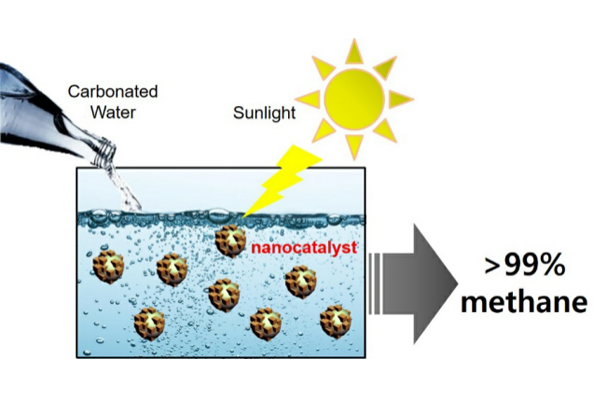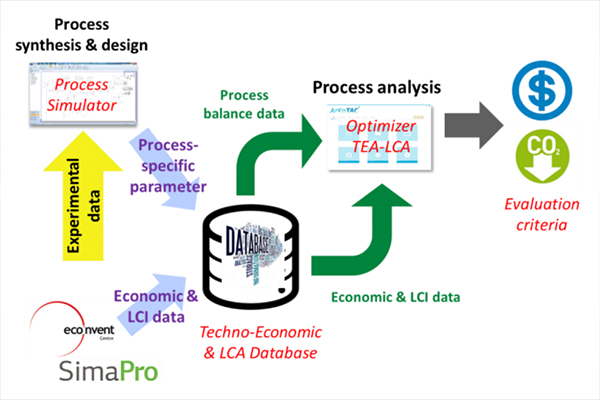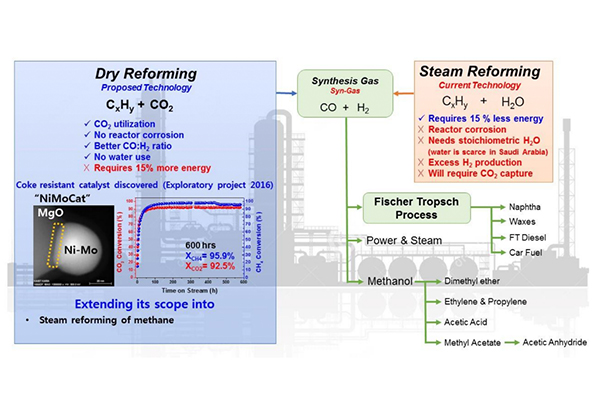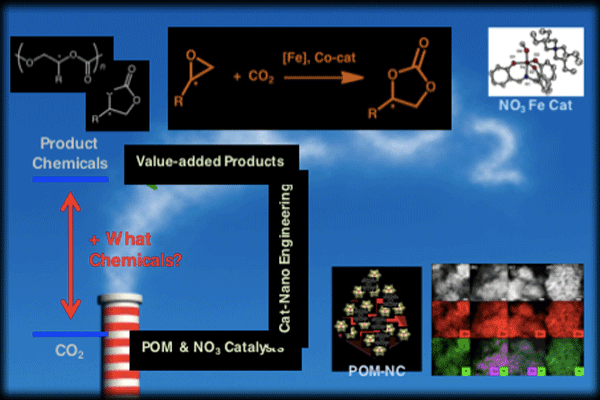-
Research Highlight
Well-Defined Metal Oxide Nanocatalysts Lead to Selective Photoconversion of Carbon Dioxide into Fuels
Well-defined colloidal zinc oxide-copper(I) oxide hybrid nanocatalysts behaved as photocatalysts for the direct conversion of carbon dioxide to methane in an aqueous medium under ambient pressure and room temperature. The activity was 1080 mmolgcat-1h-1 with a quantum yield of 1.5%, which were two magnitudes superior to any other catalysts under aqueous environments. Moreover, the selectivity to methane approached 100%, meaning that carbon dioxide could be exclusively converted into pure fuels by sunlight....read more
-
Research Highlight
Modeling Degraded MOFs Provides Insights into Carbon Dioxide Capture
New simulation techniques based on big data obtained from molecular simulations can indirectly help model degraded porous materials. As such, the new method can be used to understand properties of materials in the absence of structural information....read more
-
Research Highlight
Optimization-based study on CO2 Reduction Strategies in the Refinery Process
This research aims to analyze refinery CO2 emission sources and to suggest the best CO2 management strategy for it by taking a systematic approach....read more
-
Research Highlight
Development of Efficient Nickel Catalyst for Dry Reforming of Methane
The rise of atmospheric CO2 concentration has resulted in serious environmental problems. Dry reforming of methane (DRM) has gained tremendous attention because carbon dioxide can be converted into more useful chemicals with methane, which is also one of the most important greenhouse gases. In DRM research, noble metal catalysts have been extensively studied, but their high cost is a major obstacle. Nickel, which is considered to be promising due to its high activity but affordable price, has shown severe coke formation leading to rapid deactivation of catalysts so far. However, our nickel catalysts show high activity with exceptional durability for 600 hours of reaction. We believe these catalysts can contribute to environment and industries....read more
-
Research Highlight
Catalytic Conversion of CO2 Toward High Value Commodity Chemicals
A Saudi Aramco-KAIST CO2 Management Center project led by Professor Sang Woo Han (Chemistry, KAIST) develops efficient CO2 conversion catalysts to produce high value commodity chemicals....read more

291 Daehak-ro Yuseong-gu Daejeon, 34141, Republic of Korea
Partnered with KAIST Breakthroughs and KAIST Compass





